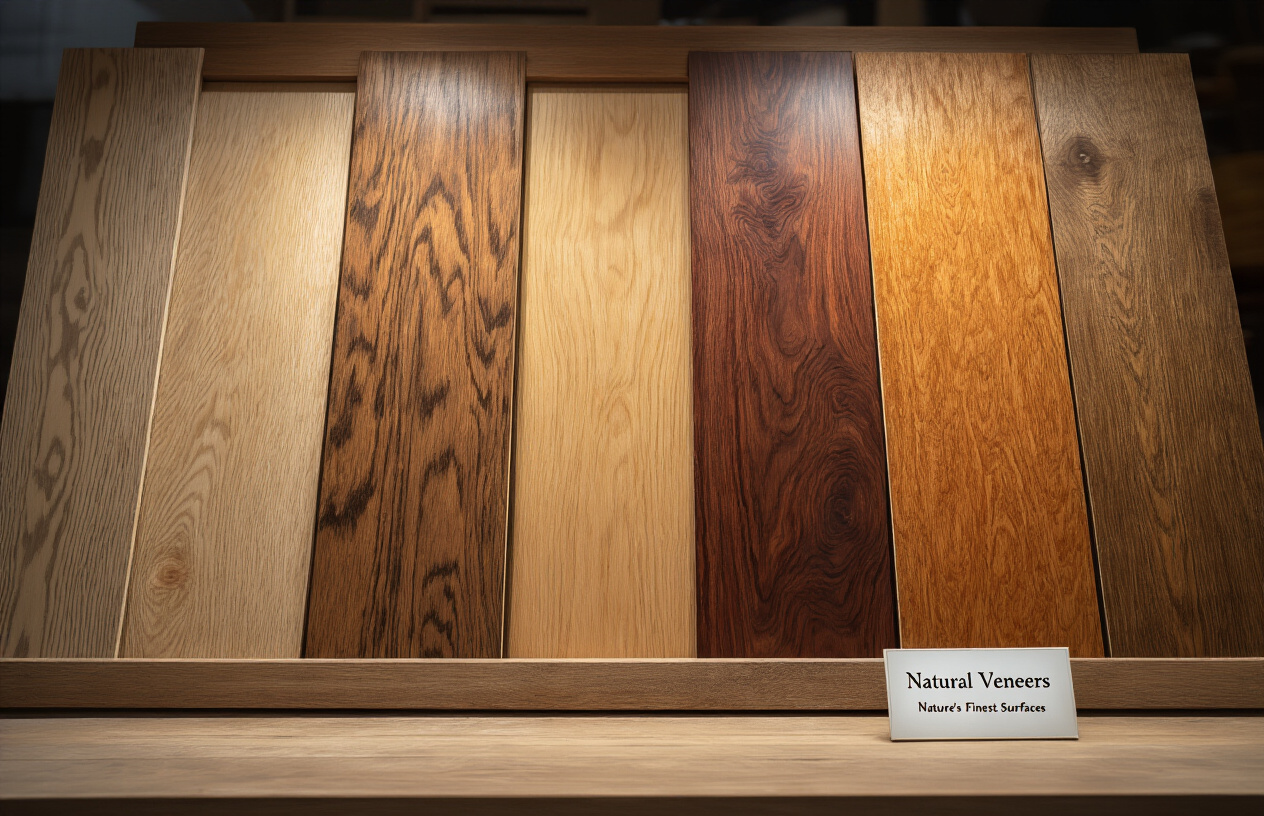Natural veneers bring the beauty of real wood to your furniture and interior projects without the high cost of solid wood. For homeowners, designers, and DIY enthusiasts looking to enhance their spaces, understanding veneer options is essential. This guide explores hardwood veneers like oak and maple, exotic varieties including teak and rosewood, and specialty figured veneers with unique grain patterns. We’ll also cover how to select the right veneer for your project and maintain its beauty for years to come.
Understanding Natural Veneers
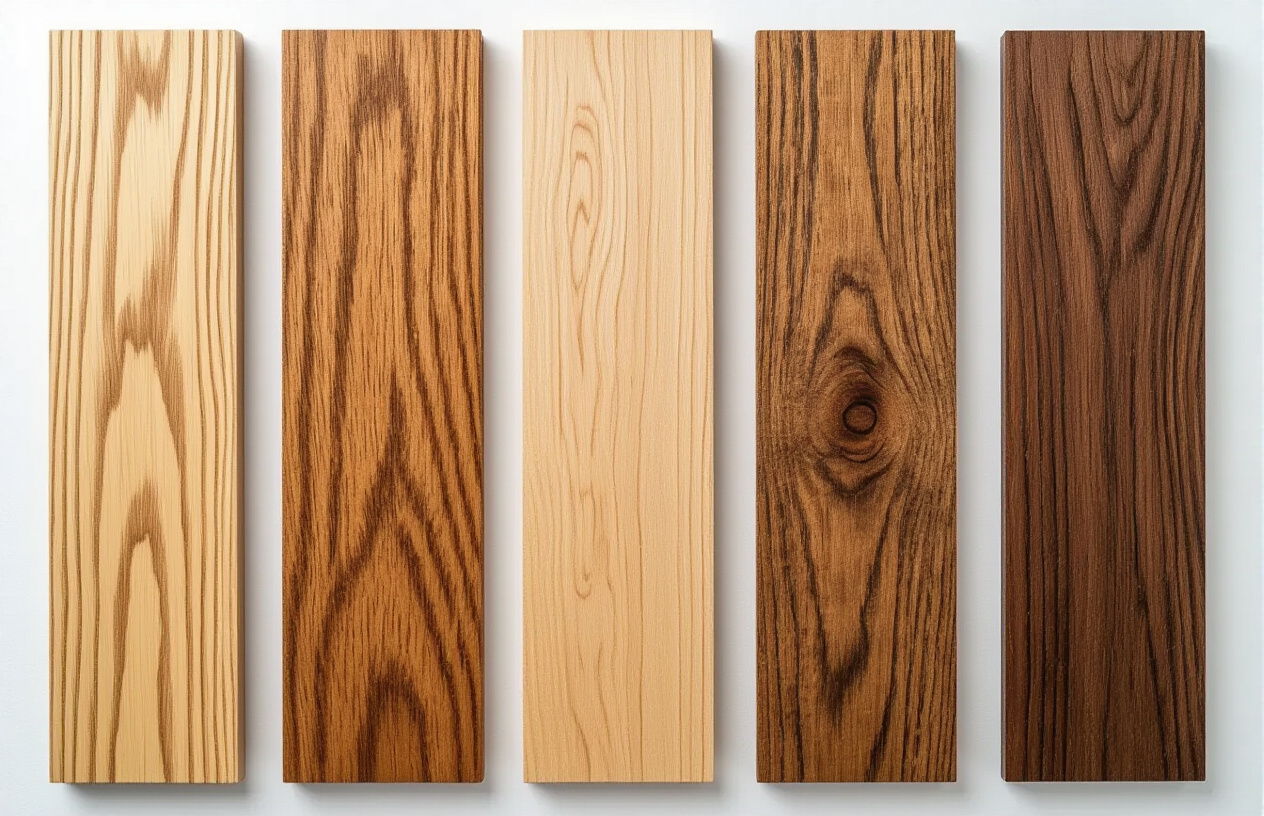
What Are Natural Veneers and How They’re Made
Natural veneers are thin slices of real wood, typically 1/42″ to 1/16″ thick, harvested from logs of various tree species. Think of them as the wood equivalent of a fancy coat your furniture wears.
The process starts with selecting premium logs, which are then either sliced or rotary cut. In slicing, logs are halved and cut parallel to produce those gorgeous grain patterns you drool over in high-end furniture. Rotary cutting spins the log against a blade like unwrapping toilet paper, creating wider sheets with more dramatic patterns.
After cutting, these delicate wood sheets are dried carefully – too fast and they crack, too slow and they warp. Once dried, they’re sorted by appearance, with the most striking patterns commanding premium prices.
Benefits of Using Natural Veneers in Design
Wood veneers give you the “I have real wood” bragging rights without chopping down entire forests or emptying your bank account. Here’s why designers go nuts for them:
- They bring genuine wood warmth and character to spaces
- You get premium wood looks for a fraction of solid wood’s cost
- The lightweight nature allows for applications where solid wood would be impractical
- The same tree can produce enough veneer for 30+ furniture pieces (versus just one with solid wood)
- They resist warping and movement better than solid wood
The real magic? Veneer sheets from the same log can be arranged in stunning patterns like book-matching, where adjacent sheets mirror each other like butterfly wings.
Sustainability and Environmental Impact
Wood veneers might be the climate-conscious designer’s best friend. One log transformed into veneer covers about 30 times more surface area than the same log used as solid lumber.
This efficiency matters. While harvesting any natural material impacts ecosystems, veneers significantly reduce the timber volume needed for production. Many veneer producers now source from FSC-certified forests, ensuring proper management and replanting.
Smart manufacturers are also embracing once-overlooked species rather than depleting exotic endangered varieties. Some companies go further by using reclaimed logs from riverbeds or salvaging urban trees that would otherwise become firewood.
The best part? Natural veneers contain zero VOCs or harmful chemicals themselves – though always check what adhesives are used in the final product if you’re concerned about indoor air quality.
Hardwood Veneers
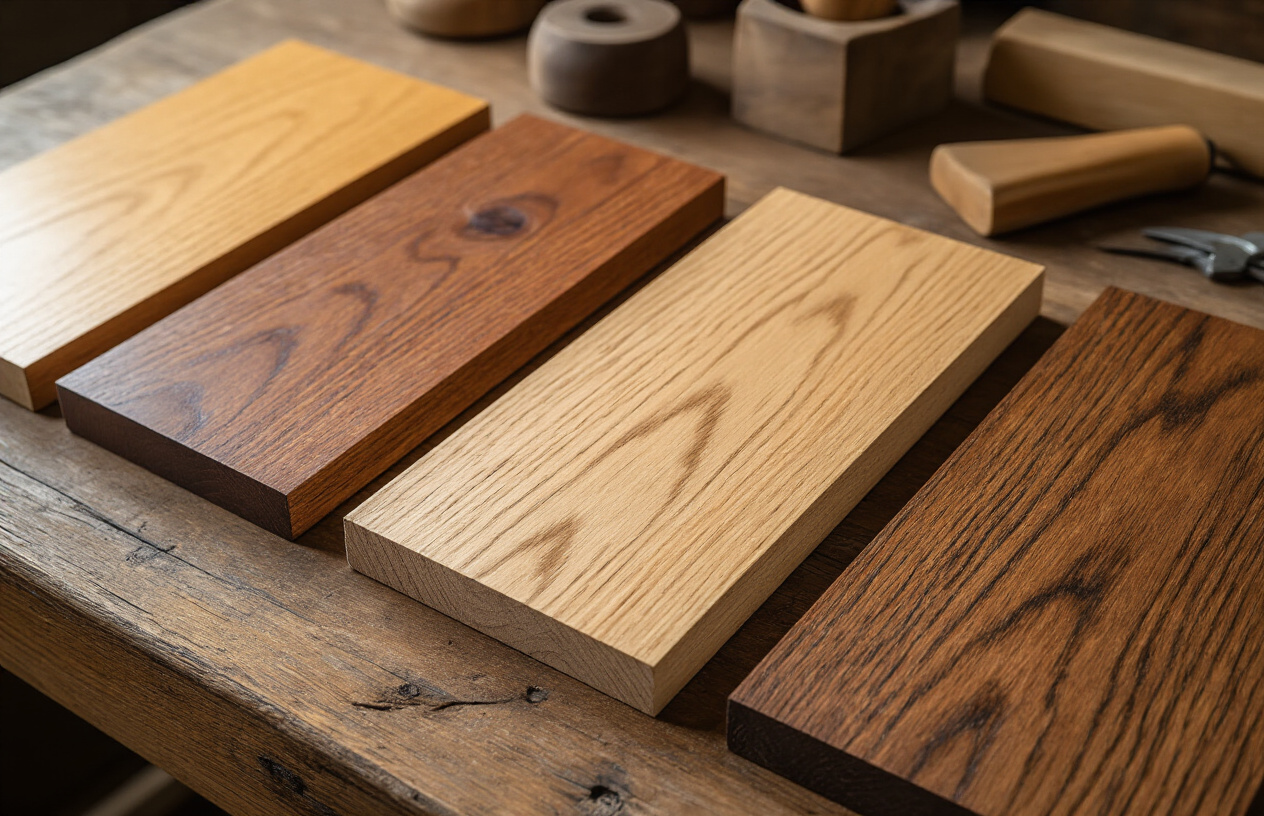
Oak Veneer: Durability and Classic Appeal
Oak veneer stands as the workhorse of hardwood veneers. It’s tough as nails and has that timeless look that never goes out of style. The pronounced grain pattern makes each piece unique – like a fingerprint in wood form.
Want a veneer that can take a beating? Oak’s your answer. It resists dents and scratches better than most, which is why it’s been a go-to for furniture makers for centuries. The grain typically runs straight with those characteristic “flecks” that oak lovers instantly recognize.
You’ve got two main types to play with: red oak (warmer, with pinkish undertones) and white oak (cooler, with olive-brown hues). White oak generally costs a bit more, but it’s also more resistant to moisture.
Maple Veneer: Light Tones for Modern Spaces
Maple veneer brightens up any room with its clean, pale appearance. Designers grab it when they want that airy, Scandinavian vibe without going full minimalist.
The grain is subtle – not in-your-face like oak. This subtlety makes maple perfect for contemporary spaces where you want texture without distraction.
What’s cool about maple veneer is how it takes stain. You can go natural for that blonde wood look, or color it to mimic pricier woods. Either way, it maintains its smooth, uniform character.
Bird’s eye maple is the rockstar variant – peppered with tiny circular patterns that look like bird’s eyes. It’s harder to find but worth every penny if you want something truly special.
Cherry Veneer: Rich Color That Deepens Over Time
Cherry veneer is like fine wine – it gets better with age. Start with a light reddish-brown tone, and watch it transform into a deep, rich auburn over the years. This natural darkening process is part of its charm.
The grain pattern? Smooth and flowing with occasional swirls. It’s not as bold as oak or as plain as maple – striking that perfect middle ground that works in both traditional and contemporary settings.
Cherry has this warm glow that seems to radiate from within. It creates an instant sense of luxury without trying too hard. That’s why it’s been a favorite for high-end cabinetry and furniture for generations.
One thing to know – cherry reacts dramatically to sunlight. That gorgeous aging happens faster in bright rooms, so expect some color variation in the early years.
Walnut Veneer: Luxury with Dark, Sophisticated Grain
Walnut veneer is the dark horse of the veneer world – literally. Its rich chocolate-brown to purplish-black tones scream sophistication. The varying colors within a single sheet create depth you just don’t get with other veneers.
The grain tells stories – straight in some areas, then suddenly swirling into figured patterns. This natural variation makes walnut instantly recognizable to wood enthusiasts.
American black walnut commands premium prices for good reason. It’s stable, works beautifully, and has that perfect balance of character without being busy. European walnut tends to be lighter with more figure.
What’s impressive about walnut veneer is how it manages to be both dramatic and understated simultaneously. It makes a statement without shouting, which is why it’s the darling of high-end furniture designers.
Exotic Wood Veneers
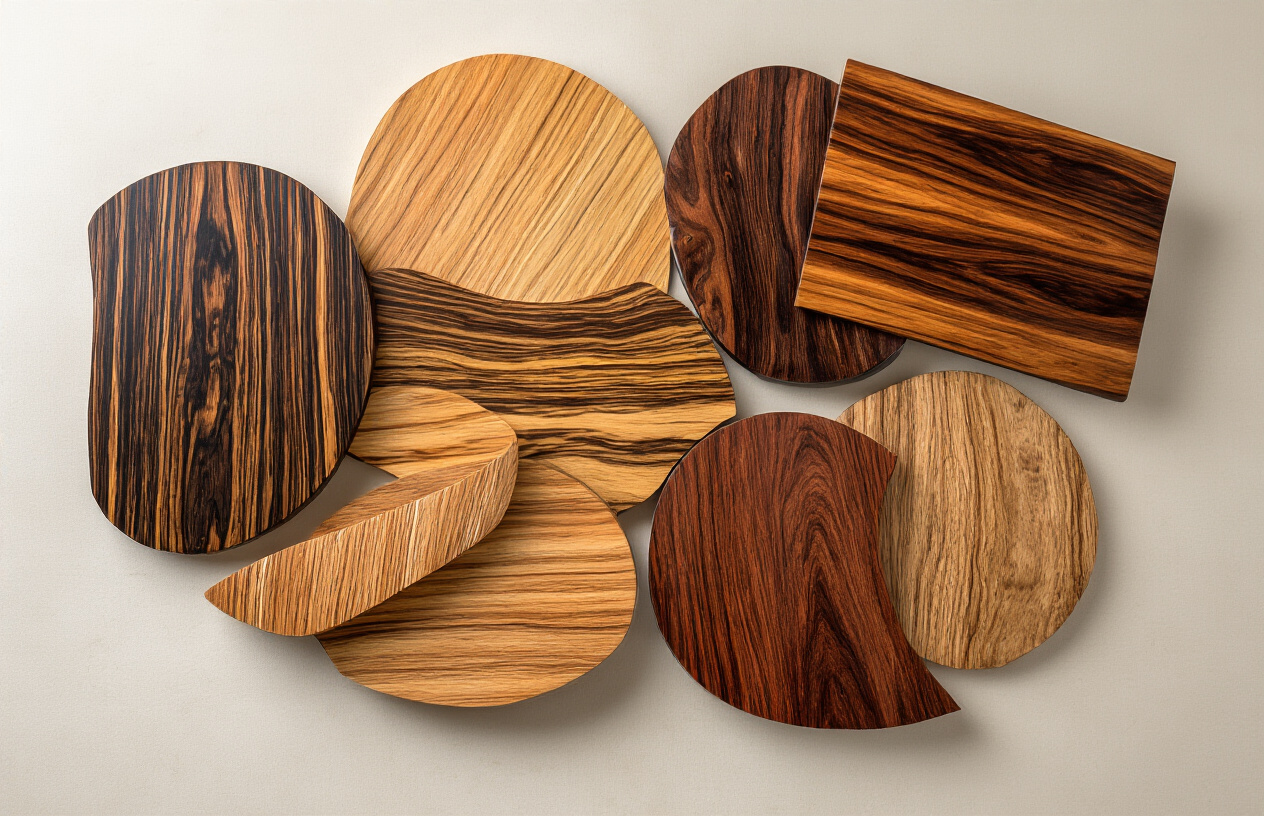
Mahogany Veneer: Timeless Elegance and Reddish Hues
Mahogany veneer sits at the top of the exotic wood hierarchy for good reason. The rich, reddish-brown color deepens with age—like a fine wine getting better over time. This premium veneer brings instant sophistication to any space.
What makes mahogany stand out? It’s the incredible consistency in grain pattern that makes finishing a dream. Cabinetmakers have been reaching for mahogany for centuries because it takes stain beautifully and polishes to a mirror-like shine.
The three main types you’ll encounter:
- Cuban mahogany: The gold standard but increasingly rare
- African mahogany: More available with slightly lighter tones
- Santos mahogany: Actually a different species with similar aesthetics
Designers love mahogany veneer for executive offices, high-end residential projects, and anywhere that needs to scream “quality” without saying a word.
Teak Veneer: Weather-Resistant Properties
Teak veneer doesn’t just look good—it’s practically indestructible. The natural oils in teak make it water and pest resistant right out of the gate. No wonder it’s been the go-to for boat building for centuries.
The golden-brown color with straight grain brings warmth to any space. But here’s what you don’t get with photos—teak has this subtle silky feel that’s unmistakable when you run your hand across it.
Unlike many exotic woods, teak maintains its structural integrity in humid environments. That’s why you’ll see it in:
- High-end bathroom cabinetry
- Outdoor furniture facing
- Kitchen applications
Ebony Veneer: Premium Dark Appearance
Ebony is the Rolls-Royce of veneers—extremely expensive, immediately recognizable, and ridiculously hard to source. The deep black color with occasional brown streaking creates dramatic contrast in any design.
The density of ebony is off the charts. It’s so heavy it sinks in water. This density contributes to its incredible fine texture that can be polished to a glass-like finish.
True ebony veneer is getting harder to find due to overharvesting. Most designers now use it as accent pieces rather than full surfaces—think inlays, borders, and decorative elements where a little goes a long way.
Rosewood Veneer: Distinctive Grain Patterns
Rosewood veneer brings serious character to furniture and architectural elements. The color range from deep browns to purples with black striping is simply unmatchable.
The grain isn’t just visible—it’s practically 3D. Run your fingers across rosewood veneer and you’ll feel the variations in the grain pattern. This tactile quality is what makes it so prized.
Brazilian rosewood was once the industry standard but has been CITES restricted since the 1990s. Today’s designers typically use:
- Indian rosewood (less restricted but similar appeal)
- Bolivian rosewood (excellent color variation)
- Madagascar rosewood (incredible figuring)
Zebrawood Veneer: Dramatic Striped Appearance
Zebrawood gets its name honestly—the bold, contrasting light and dark stripes create a dramatic visual effect unlike any other wood. It’s impossible to be subtle with zebrawood veneer.
The heartwood alternates between pale golden yellow and dark brown streaks. Quarter-cutting the veneer enhances these dramatic stripes.
The strong visual presence means zebrawood works best in:
- Statement furniture pieces
- Accent walls
- Architectural highlights
This veneer isn’t for the faint of heart—it demands attention and steals the show in any space. Designers pair it with more subdued elements to let the zebrawood be the star.
Specialty and Figured Veneers
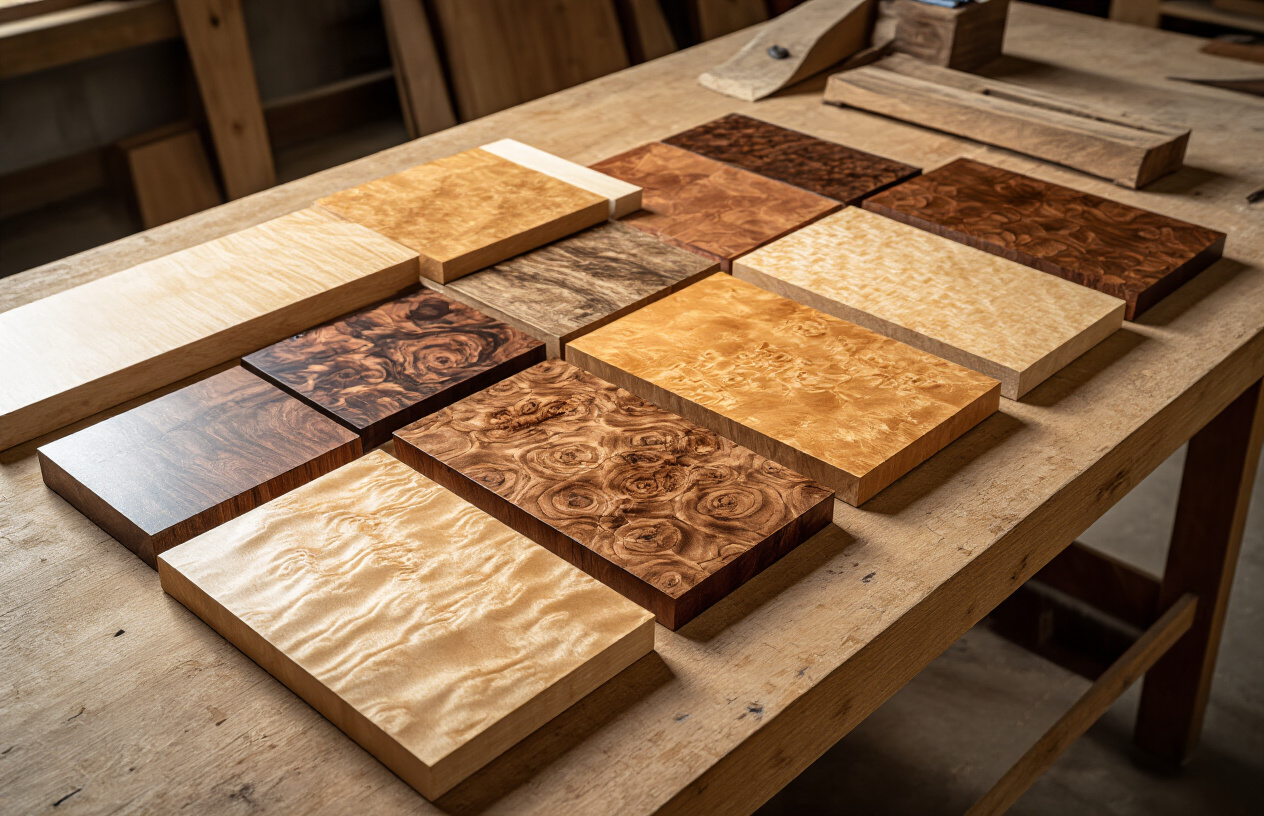
A. Burl Veneers: Unique Swirling Patterns
Ever seen those wild, chaotic swirls that look like nature went totally abstract? That’s burl veneer for you. These rare beauties form when a tree experiences stress—could be from injury, fungus, or even insect infestation. The tree responds by growing cells in all directions, creating those mesmerizing, unpredictable patterns.
No two burl veneers are identical. Period. The hypnotic, turbulent appearance makes them perfect for statement pieces like executive desks, feature walls, or that conversation-starting coffee table you’ve been dreaming about.
Walnut burl steals the spotlight with its rich chocolate tones, while maple burl gives you those lighter, golden swirls that pop against darker woods. They’re expensive? You bet. But totally worth it when you want something nobody else has.
B. Bird’s Eye Veneer: Distinctive Circular Formations
Named for exactly what it looks like—tiny eyes watching you from the wood. Bird’s eye patterns show up as small, circular formations scattered across the surface, typically in maple but occasionally in other species too.
The cause? Nobody’s 100% sure. Some experts think it happens when buds get trapped within the growing tree. Whatever the reason, the result is stunning.
This veneer screams sophistication without being flashy. It’s subtle enough for larger applications but interesting enough to avoid being boring. Perfect for high-end furniture, yacht interiors, and custom musical instruments where that extra touch of class matters.
C. Quilted and Curly Veneers: Three-Dimensional Effects
Talk about wood that plays tricks on your eyes! Quilted veneer has a wavy, three-dimensional appearance that shifts and changes as you move around it. The pattern resembles rippling water frozen in time, creating an almost holographic effect under different lighting.
Curly veneer (sometimes called “fiddleback” because it’s popular in violin making) features tight, consistent waves running across the grain. When finished, it produces that mesmerizing shimmer effect woodworkers call “chatoyance” – yeah, it’s a fancy word for when wood seems to glow from within.
Maple and mahogany frequently display these patterns, but the king of curl is definitely Hawaiian koa. The depth these veneers add to any project is unmatched. They’re not just wood surfaces; they’re practically living artworks that transform ordinary furniture into family heirlooms.
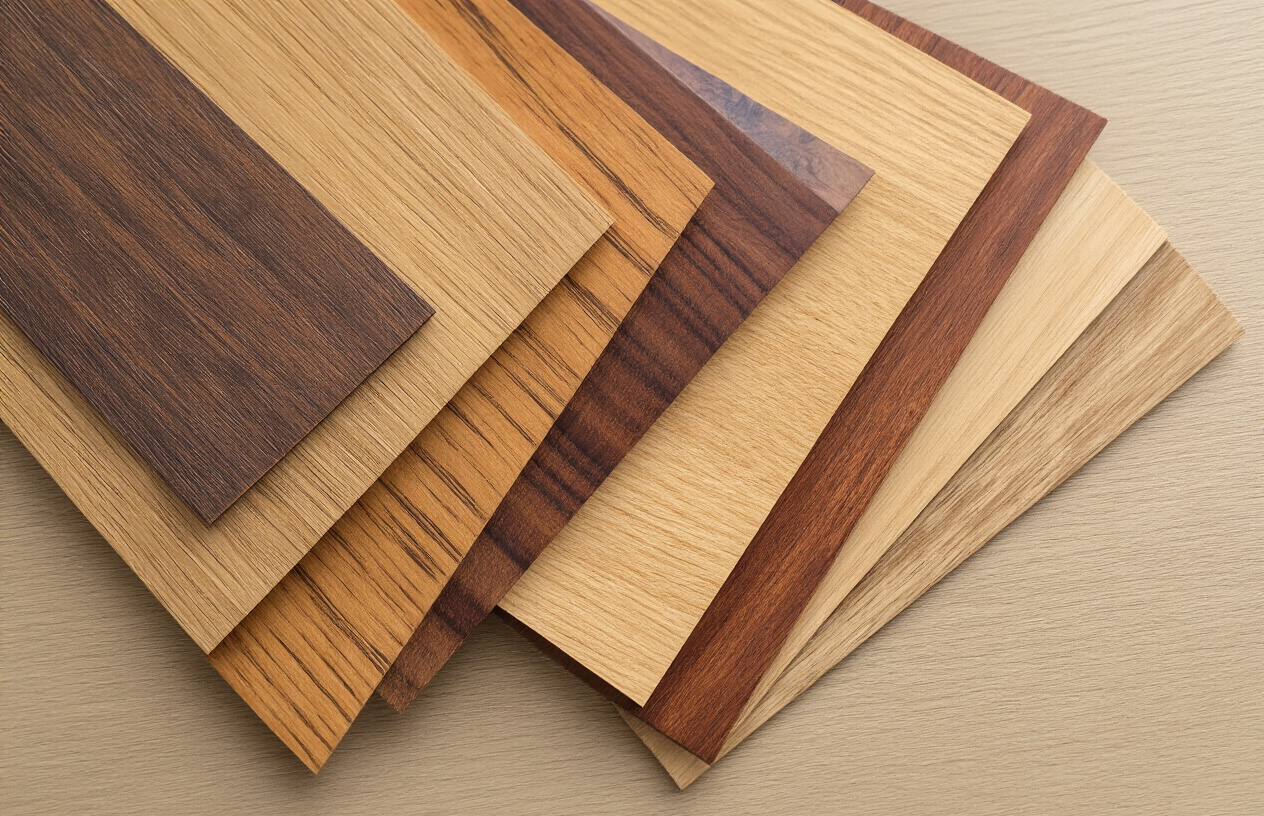
Natural veneers offer an incredible range of options for those seeking to enhance their woodworking projects with authentic beauty. From classic hardwoods that provide timeless elegance to exotic varieties that introduce unique character, and specialty figured veneers that showcase nature’s artistic patterns, there’s a natural veneer suited for every design vision and application.
When selecting your ideal veneer, consider not only its visual appeal but also its durability, sustainability, and maintenance requirements. With proper care and understanding of the different types available, natural veneers can transform ordinary surfaces into extraordinary statement pieces that celebrate the unmatched beauty of real wood. Make your next project stand out by choosing the perfect natural veneer that aligns with both your aesthetic goals and practical needs.
